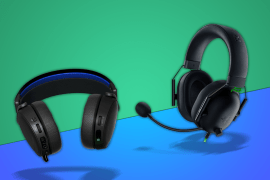Stuff Meets: Google’s Pixel product manager, Shenaz Zack Mistry

Shenaz Zack Mistry is a Product Manager at Google working on the Pixel. She has been with Google for 15 years and has led multiple product initiatives across YouTube and Google Search. Here, she talks about the company’s focus on inclusivity, sustainability and why scouring Reddit is excellent for customer feedback.
I’m a product manager at Google, currently working on Pixel software experiences
Our main focus is on the software that gets built specifically for the pixel devices. It’s a fun and challenging job. I’ve been at Google for a long time now. I’ve worked with YouTube, search, social and I’m heavily involved with ethics at Google. I love the variety and that’s why I’ve been here for so long.
The just-launched Material You Collection is all about celebrating creativity
We tasked a diverse panel of creators, who are fashion forward trendsetters (Tinie Tempah, Bettina Looney, Radam Ridwan, Sophie Butler, Jack Guinness and Kyle De’Volle) who used the Pixel 6 to develop a digital fashion range of 12 items. It’s digital fashion, which also plays into the focus on sustainability. It works like this: You send in a photo, select and pay for your digital garment of choice and then that garment will be pasted onto the image and emailed back to you. It’s similar to computer graphics but done in a really intelligent way, bringing art and technology together, plus the fashion pieces are incredibly progressive and exciting.

Sustainability was a huge part of the Pixel 6 design too
Sustainability is extremely important to us. So we’ve also continued our investment in making our parts more sustainable. For example, with Pixel 6 and 6 Pro they’re designed with recycled aluminium to reduce their carbon footprint. Another huge thing we’re doing is helping software cycles last longer so you can keep your devices longer.
Pixel 6 is our best expression of Android
We designed it over years using our expertise in mobile and operating systems while keeping our hardware in mind. We’ve been working for a while on the Pixel 6 device. Here we wanted to make the most personalised and helpful phone with a focus on AI and machine learning. The Pixel 6 and 6 Pro is a huge evolution of the design language and we’ve had multiple iterations to get here. The 6 Pro is inspired by jewellery and watches with its polished metal body, it feels refined.
Reimagining the form factor wasn’t our ultimate goal
We basically wanted to create a very complete experience which is built around the user. We did this by encouraging the design team and the ID team, to work very closely with the software development team in the Android department. So the colours, fonts and widgets all work together in a very singular and fluid experience. For instance the wallpaper matches the design of the hardware and it takes a lot of work and collaboration to do that. And we wanted to have as many unique expressions as possible so people can really make it their own.
Google Tensor is our biggest mobile hardware innovation in the history of the Google company
It’s been a combination of years of investment in AI and Google’s deep experience in silicon. Rick Osterloh, our SVP made the point that every aspect of tensor was designed and optimised to run Google’s machine learning models. We worked extremely closely with our AI researchers to create machine learning models that will run well on Pixel and we use these models to power all kinds of new experiences.

I personally sift through Reddit posts and Facebook groups to read reviews and see the feedback
Our users come first and we have a massive pool of data, especially on Android, and we look at that at every development stage. We also have our Googlers too and we get feedback from them and they’re a lot more critical, which is helpful. It takes time to develop a product and we’ve been working on this device for a couple of years. Another thing we have for Pixel are feature drops. We want to make sure your device continues to get better, so every couple of months, we release software features for your phone so that your device gets better. So we can act on the feedback and bring them straight to Pixel users.
This allows us to go from one size fits all piece of hardware into a device that’s intelligent enough to accommodate and respect differences
We have the most advanced speech recognition thanks to some outstanding work by our speech team and thanks to Tensor, it’s doing this work at half as much power. And inclusion is at its core. We also just launched call screening in the UK and we’ve got extremely fast and accurate voice typing. It can also do emoji transcription, which is one of my favourite things.
I’m really proud of working on the language features of the phone
Not everybody speaks one language, we’re a globally connected world, right? My parents speak the same language as my kids, but they’re not as fluid. It’s always difficult when you’re chatting over WhatsApp or text message. My mother-in-law sent me a message I didn’t understand and now I can just answer easily because it’s translated for me on the device. We’ve dramatically improved all the translations so they’re far more accurate. All these language features are built into the device and you can take advantage of them without internet connection, even when you’re travelling, so you don’t have to have a data plan.
Inclusivity extends to the camera too
For too long, cameras in smartphones have centred around white skin. Not intentionally, but it’s a bias that’s crept into many of our modern digital imaging products and algorithms, especially because they’re not being tested with a diverse enough group of people. It’s critical that we work equitably for everyone, especially communities of colour, like mine. Building for the community means we have to acknowledge our own gaps and learn from the folks who know this issue best. So the team started working with image experts and photographers and we asked them to test our camera in a wide range of tough lighting conditions with multiple skin tones to help us create more diverse data sets. Then that team worked directly with our engineers telling them what was already working and what wasn’t. All of these changes are part of Real Tone, making pixel the most inclusive smartphone camera available.




